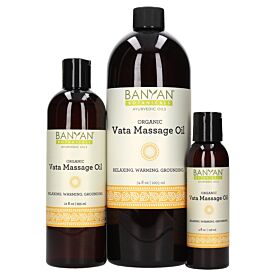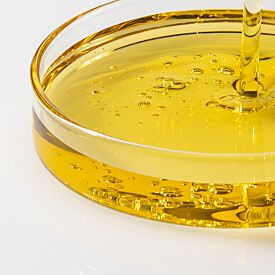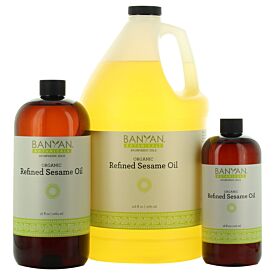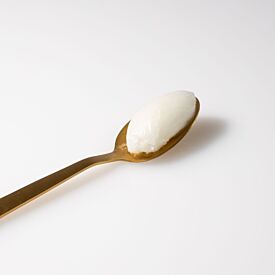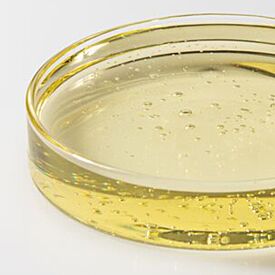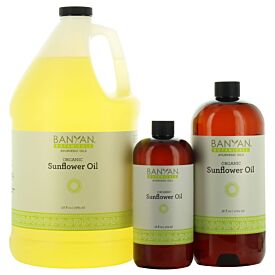The Best Essential Oils for Balancing Vata
Winter is the vata time of year: the weather is cool and crisp, days are short, and nights are long. The vata dosha relates to the air element out of balance and can include windy symptoms that come and go (like being unable to concentrate), dryness, hypersensitivity, and restless sleep. There are lots of ways to help bring that windy vata back into balance, and one of the most amazing is the use of essential oils.
Essential oils are concentrated plant essences. Anytime you notice a plant’s powerful fragrance—think about rose, oregano, or mint—you’re experiencing the volatile oils evaporating into your sinus cavities where they are detected by your olfactory nerves. These oils don’t just smell nice; they can also have powerful therapeutic effects.
When inhaled, essential oils primarily work on the subdosha of vata called prana vata. Imagine prana vata as the vital energy that draws air into your body. Although we can survive days without water and weeks without food, our biological systems stop working after only a few minutes without air. Thus the prana vata is one of the most important forces in our body, as it keeps us alive moment to moment.
Prana vata doesn’t just refer to oxygen, however. It also is about maintaining mental calm and tranquility. Taking a few conscious deep breaths helps to calm agitation and bring clarity to a difficult situation. This mood-regulating effect of the breath is an important function of vata, and one we should be aware of throughout the day. We can enhance this effect using aromatherapeutic botanical oils in an atmospheric diffuser—an electronic device that disperses tiny droplets of essential oils into the air—or by applying a drop to the palms, covering the nose and mouth with the palms, and breathing deeply.
When applied to the skin and diluted in a fatty carrier oil such as sesame or jojoba, essential oils are absorbed or digested by the skin, and their therapeutic benefits affect the local area. One of the most powerful techniques is to apply vata-reducing essential oils in sesame oil to the feet at bedtime. Some essential oils are so hot they will cause skin irritation. However, oils that pacify vata are generally nourishing and safe to use on the skin.
An Ayurvedic herb famous for its grounding and nourishing qualities is ruh khus, wild-harvested vetiver. This dark, unctuous oil comes from the roots of the plant. Ruh khus is known for its balancing properties, which ease nervous tension while simultaneously aiding concentration. It is a premier oil for aiding restful sleep when diluted in a carrier oil and then applied to the soles of the feet. Vetiver is also well known for its use in perfumery, and the high quality ruh khus makes an excellent single-note personal fragrance.
![]()
Lavender, the most famous essential oil in the world, is excellent for calming vata. Prized for its safety and versatility, lavender has been used for hundreds of years in Europe. Lavender has flourished with the advent of large-scale essential oil distillation, and today there are dozens of varieties cultivated around the world. It is renowned for its calming effects on the mind, and its ability to induce an uplifted emotional state while also promoting deep rest. Lavender is safe to use on the skin and its attractive fragrance is used in perfumery. It’s ideal for direct palm inhalation, and using in the diffuser.
Clary sage is another herb popular in perfumery for its tranquil fragrance. This herb has been used for hundreds of years to soothe nervous energy and promote a sense of well-being. Clary sage has a special affinity for the female endocrine system, and is commonly called the “woman’s oil” because of its ability to calm the emotional ups and downs of the menstrual cycle. Its soothing and balancing effects make clary sage an ideal essential oil for balancing vata when used in an atmospheric diffuser or applied topically as a perfume.
An herb with a long history of traditional use in Ecuador is palo santo. This herb has been distilled into an essential oil only recently, and so more people around the world have experienced its benefits. The pronounced uplifting fragrance of palo santo has both inspirational and calming characteristics, which make it ideal for promoting emotional equanimity. Traditionally used as a ceremonial herb to promote meditation and spiritual moods, palo santo has a profound calming effect on the wild emotional winds of unbalanced vata. Palo santo is ideal for the diffuser, and one of the best oils to use with direct palm inhalation.




